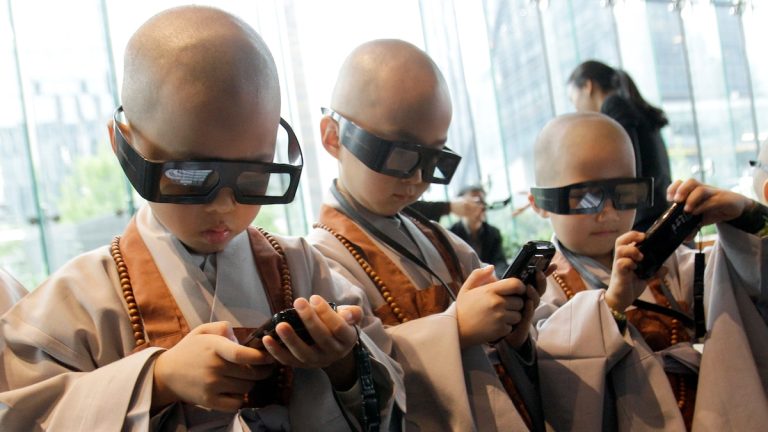Nuns jumping out of a closet or indicating whether they prefer evening or morning prayer while hip-hop group Run DMC’s “It’s Tricky” plays is not what you would expect to find within a deeply religious congregation. But the Daughters of Saint Paul are a new generation of nuns. Their order was established to follow the example of the Apostle, and they use the media to make Christ known. With 157,000 followers on TikTok, they rightly deserve the nickname Media Nuns. Their mission is made easier by their genuine warmth. Sister Orianne Pietra René says: “Not only do we authentically share ourselves, because we like to have fun, but we bring everything that is Christ to the whole person who aspires to this joy and this vitality, to this fullness of life.”
In 2019, Sabah Ahmedi, the imam of the Baitul Futuh Mosque in London, was in a teahouse with a friend. The two men discussed misconceptions about Islam. This speech inspired Ahmedi to create his social media brand Young Imam to “help people understand Islam better.” He posts almost every day. On his sites, he talks both seriously and humorously about everything, from rituals like ablutions – “We must wash before saying our prayers, because it is part of the spirit of cleanliness” – to his cafes favorites.
Artificial intelligence helps religious leaders innovate
But even more than people like LaRance, Strauss and Imam Ahmedi using social media to get the message out, religion is being affected by the phenomenal growth of artificial intelligence.
Among these complex technologies are large language models, systems trained on large amounts of data that can analyze and process language and generate credible, human-like responses.
Some religious leaders have embraced this development. Priest Caru Das Adhikary of Utah’s Sri Sri Radha Krishna Temple loves performing on stage, noting, “My interest is telling stories, making rap music and composing songs.” I use AI for almost every composition I make. He relies on Google Gemini to transform a verse from the Sanskrit text Hare Krishna into a rap. Caru Das admits that sometimes what he produces is mundane, so he spends time correcting and polishing the words. “It revives me. I work on it, I claim it. I make it mine.
Ed Stetzer, dean of the Talbot School of Theology at Biola University, recently prepared a sermon on a Reformation doctrine entitled Solus Christus, or in Christ alone. He asked ChatGPT for quotes from second and third century church fathers regarding doctrine. The AI gave a few examples, but as Stetzer says, the AI isn’t always right: “It gets me started on the path.” There is a certain strength in that.
Others are more circumspect. Since AI technologies are developed independently of established religious institutions and communities, people who access them are not interacting with someone who knows them, their family, or the reason they are searching for something. For example, those seeking answers from a Jewish perspective might not be interested in an interpretation that offers a Southern Baptist interpretation. “We’re losing the personal touch, but also the emotion,” says Rabbi Goldschmidt, who holds a master’s degree in computer science from Johns Hopkins University. “What is the social context? What is the spiritual and material status of the human who asks this question? There is no absolute question. There is no absolute answer.
Robot priests guide the faithful
Some religions are even beginning to integrate technology into their worship in the form of robot priests. Gabriele Trovato grew up in the Italian port city of Livorno. As a youth, he took for granted the religious iconography that permeates this largely Catholic nation. “In my hometown we have a lot of sacred art. The statues are part of the landscape. Even in the middle of the streets, we see niches with the Virgin Mary,” he says. Based on these statues, Trovato, an associate professor at Shibaura Institute of Technology in Tokyo, created the SanTO (Sanctified Theomorphic Operator).
The little robot has the appearance of a neoclassical saint. It is designed to be accessible to the elderly as well as those who are isolated or who may have mobility difficulties. Individuals can use an electric candle to touch SanTO’s hands and ask him a question, accessing a vast database containing knowledge about the Bible, prayers and lives of saints.
In the Longquan Temple in Beijing there is a robot named Xian’er. With his yellow robe and somewhat perplexed look, he chants Buddhist mantras and explains the fundamental principles of the faith. A life-size robotic elephant recently replaced a live, chained elephant, and it participates in cruelty-free rituals at the Irinjadappilly Sree Krishna Temple in Thrissur, India.


